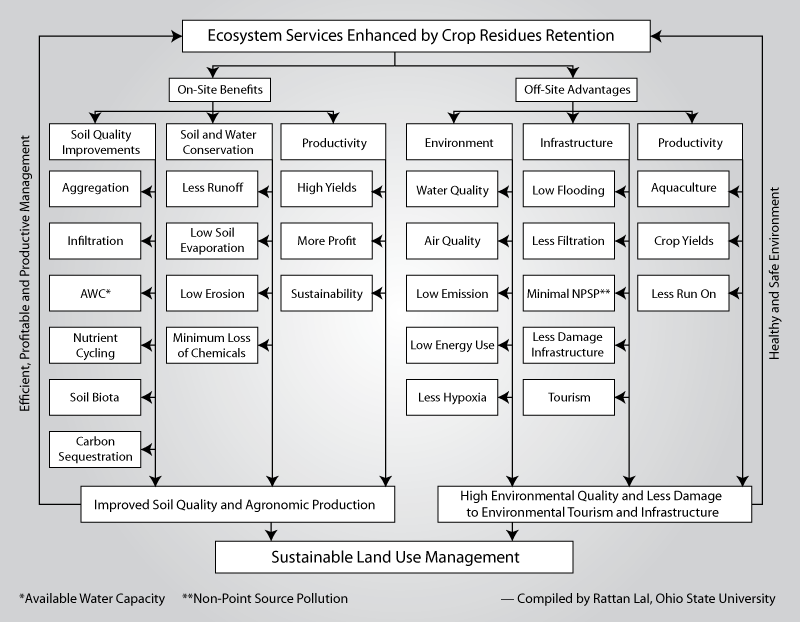26 No-Till Benefits, Advantages
While the headline “Ecosystem Services Enhanced by Crop Residue Retention” sounds academic, this chart effectively illustrates the many benefits that no-till brings to protecting the environment. Pulled together by Ohio State University soil and carbon scientist Rattan Lal, this data highlights more than 2 dozen on-site and off-site benefits and advantages of no-till.
On-site benefits include soil quality improvement, soil and water conservation and productivity. No-till’s off-site advantages fall into the areas of environment, infrastructure and productivity. These 26 no-till benefits and advantages lead to improved soil quality and health, improved crop production and higher environmental quality rankings when compared with more intensive tillage systems.
When you look at the benefits that can be gained with effective management of soil organic matter, clay content, soil depth and water retention, they all favor no-till. The move to no-till also improves carbon sequestration, biodiversity, elemental cycling and resilience to a number of naturally-occurring environmental concerns that affect food security.

Different Approach Needed
Lal recognized that agricultural ideas inherited from the “Green Revolution” that got started in the 1950s and 1960s — which emphasized farm mechanization and relied heavily on high fertilizer, pesticide and herbicide inputs — were too expensive and out of reach for many of the world’s poorer farmers.
By nurturing the soil through no-till, crop rotations and consistently covering soil with cover crops or mulch, he’s demonstrated that growers throughout the world can farm sustainably and eliminate many of the negative impacts of intensive agriculture.
A leading researcher on carbon sequestration, Lal has demonstrated how soil can provide a long-term storage site for carbon regardless of the number of years intensive tillage has destroyed soil carbon. His research has shown that with no-till, soil carbon can be restored over many years, turning these soils into carbon sinks and thereby helping reduce troublesome atmospheric carbon dioxide concentration.
Lal maintains further worldwide adoption of no-till will lead to more effective management and sustainable land use. Since no-till today has been adopted on only 9% of the world’s 3.3 billion acres of arable land, there’s plenty of room for further adoption of this highly valuable reduced tillage system.







Post a comment
Report Abusive Comment